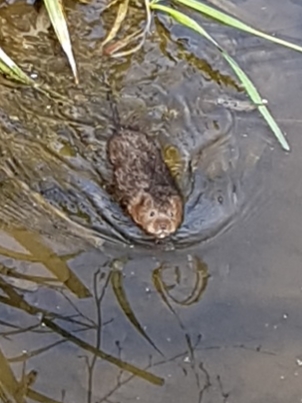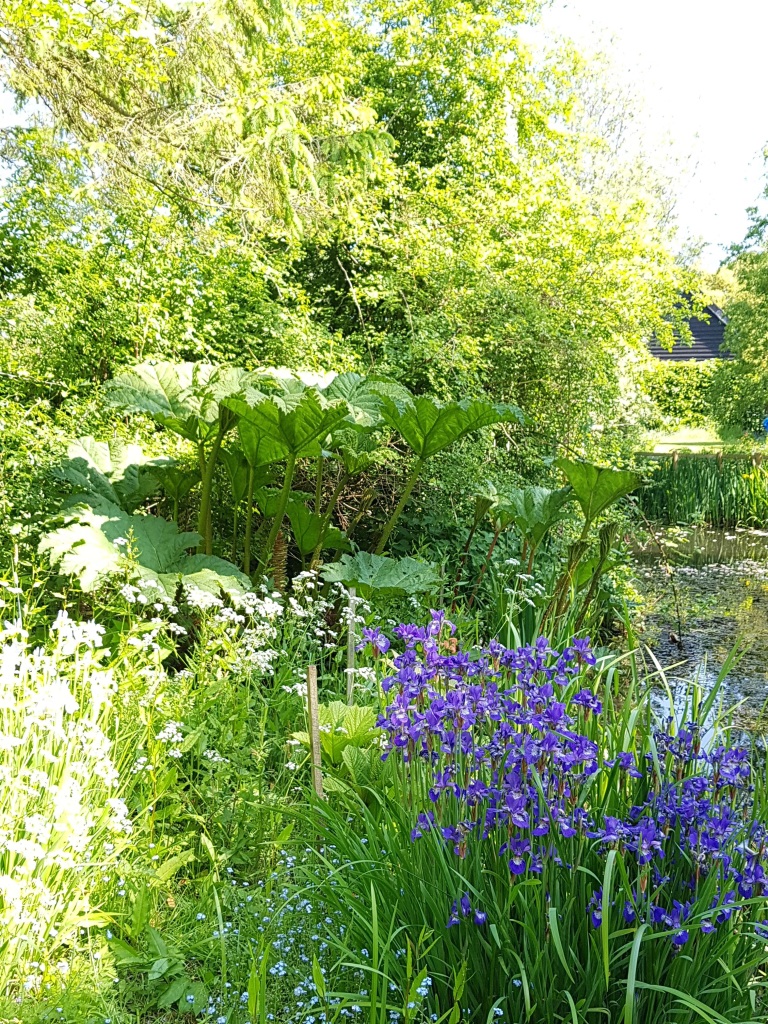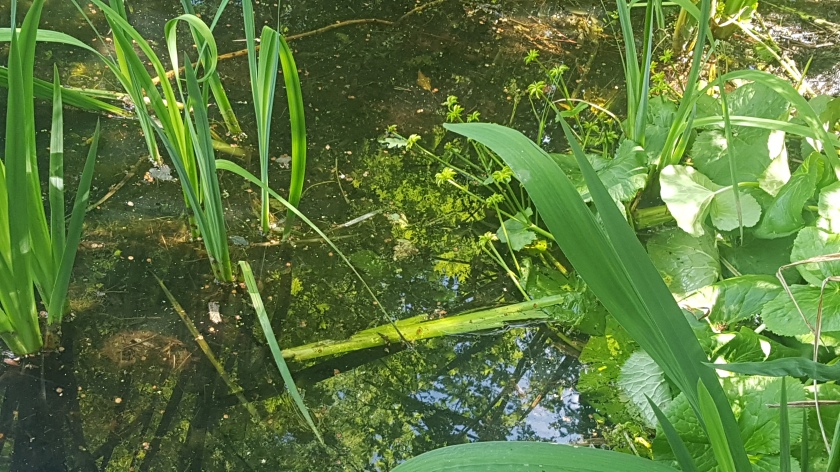Wildlife is taking over management of our pond edge, which we’ve always planted carefully with attractive and compatible species. The plan was to integrate it with the garden, using waterside flowering plants, while leaving part of the bank untouched to encourage water voles, water shrews, newts, grass snakes and other interesting neighbours.

In the last year or so we’ve been so successful that the voles in particular have taken control of what grows beside the pond. The tell-tale sign that they are working hard is a neat diagonal cut near the base of a leaf or stalk, where the core is soft and edible. The rest is discarded, often to float in the pond.

Every single one of the large clumps of iris sibirica we planted, which were thriving two years ago, have been harvested: the even bigger clumps of yellow flag iris, which at one stage threatened to take over the pond edge, have now almost gone.


The wild reeds we encouraged in three areas are under attack, though they grow so fast that they are probably a sustainable crop from the voles’ point of view. Every now and then we spot a single reed in a clump shivering slightly, moving in the breeze in a different way from its neighbours. Then it falls like a miniature tree, sawn off at the base, as we catch glimpses of a small brown vole at work.
Their most spectacular project, the first change we noticed a couple of years ago, was to demolish almost all of the 5 foot tall reed mace. These have starchy fillings near the base of the stem which apparently make a bearable meal for humans if processed and cooked properly (we saw on some TV programme about surviving in the wild). The stems, dozens of times taller than a water vole, floated in the pond after they were felled, and we could see the neat cuts.
We’re not sure yet what is responsible for the water lily leaves, freshly-cut or broken near the base of their stems, that we see floating around every day. That’s been going on for years, and at first we blamed it on the wild ducks, but not many have come this year. We protected the original lilies with netting but we abandoned that in favour of planting lots more – 10 now – so that overall leaf cover of the water would grow faster than they are cut.
Water voles are mainly vegetarian, but water shrews are not. We are waiting to see what effect their recent arrival has on underwater life, which is delicately balanced.
The fish we had, all escaped from a neighbour’s pond, have already been wiped out by a visiting otter. For some reason, we are very well stocked with newts but frogs and toads, once plentiful, are not so common any more. Could that be the grass snakes? We’ve also sighted an adder.
Insect life under water is vigorous but they are a main part of the diet of water shrews, an animal so hyperactive for its size it may die if it does not eat for more than three hours. We will observe carefully.
The voles are now so successful that they are prey themselves, to neighbours’ cats, for a start – which we chase away – but it may not be a coincidence that this month for the first time we have seen a hawk hover over the pond edge.
The banks of the pond are changing physically as well, with the network of tunnels in which voles and shrews live making the ground soft and spongy in places, and contributing to gradual settlement. Some stretches now flood easily.
Moles have tunnelled all over the grass running down to the bank above the flood level, so come close to where we think the voles make their extensive tunnel network. The voles have underwater and above-water entrances on the bank and – we think – the occasional back entrance on dry ground a foot or two back.
We had an accidental glimpse of one of their tunnel networks a couple of years ago, when we lifted some thick black plastic left by the bank for 6 months, to control nettles. The plastic turned out to have been used by the voles as the roof of a maze of tunnels leading down and into the water. We replaced the plastic immediately, and it is still there.
We find it exciting and interesting to watch all this happening. The loss of control of our plantings round the pond is a small price to pay for the privilege of watching the ecology change to suit its wild inhabitants.
